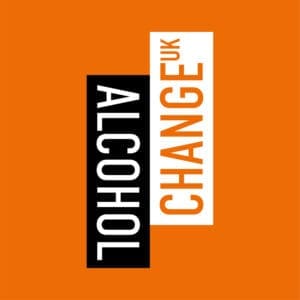There is a lot of confusion over the labelling and classification of drinks called Alcohol Free.
Firstly the Law in the UK is pretty simple:
The Licensing Act 2003, Section 191 defines what is classed as Alcohol
191 Meaning of “alcohol”
(1) In this Act, “alcohol” means spirits, wine, beer, cider, or any other fermented, distilled, or spirituous liquor [F1(in any state)], but does not include—
(a) alcohol which is of a strength not exceeding 0.5% at the time of the sale or supply in question,
This piece of legislation means that any drink at 0.5% ABV or below does not require a license to sell it and it can be consumed by anyone of any age. However, we here believe that it is best practice, that as most of the product we sell is clearly marketed as a substitute for an alcoholic drink, it’s not appropriate for sale to under 18’s.
Therefore any drink that is 0.5% ABV or below is not classed as containing Alcohol, there are some drinks that we stock that are at or below 0.5% ABV (Alcohol by volume)and some that have 0.0% ABV and have never had anything in the production process that turns into Alcohol. The main confusion comes from packaging regulations in the UK
The Portman Group’s voluntary Code of Practice on the Responsible Naming, Packaging and Promotion of Alcoholic Drinks also covers non-alcoholic products. It says, “…if a drink below 0.5% ABV shares the same brand or branding, or is a variant of a drink that is subject to the Code, then it is the view of the Advisory Service that the spirit of the Code will apply in the same way to that product.” This would suggest Heineken Zero, Peroni Libera, and Estrella Damm Free Damm for example should clearly be marked in accordance with the following classification:
Alcohol-Free beer = no more than 0.05% ABV
De-Alcoholised beer = no more than 0.5% ABV
Low-Alcohol beer = no more than 1.2% ABV
Alcoholic beer = contains more than 1.2%
AHHH I hear you cry but there is some Alcohol in Alcohol Free Drinks then!
Alcohol-free beer contains a small amount of alcohol, in the UK anything containing 0.05% ABV or less can legally be called alcohol free, in the EU this limit rises to 0.5% ABV. This is due to small amounts of alcohol occurring naturally as part of the brewing process, this is called ethanol fermentation. Ethanol fermentation is the process by which yeasts convert sugars into ethanol (alcohol) and carbon dioxide. Brewers of beers under 0.5% ABV either remove the alcohol from full-strength beer or use a process that only produces minute amounts of alcohol. One of the most common methods is to heat the beer to boil away alcohol. Another is to pass the beer through a filter which removes the alcohol. Another way has been developed by our friend at Drynks Unlimited who uses a Cool Vacuum Distill (CVD) an Oxygen-free vacuum chamber to gently heat our liquid for just a few minutes to remove all of the alcohol.
So whilst this is strictly true you have to realise that if sugar is present in anything you eat you are consuming a small amount of alcohol, indeed everyone produces alcohol within their bodies every day. They do so regardless of age, race, or religion. The rate can increase because of diet. But even if your religion forbids alcohol, you produce it anyway. And, like everyone else, you will do so as long as they live. The process is endogenous ethanol production. And we may produce up to about one ounce of pure alcohol in a day, indeed some people produce too much alcohol in their gut and become very ill with ABS.
You may also not realise that Alcohol is present in many of the food you eat every day, fermented foods such as yogurt and baked goods (bread, rolls, etc.) contain alcohol. But so do fruits and fruit juices. And alcohol levels are higher as the fruit ripens or as time passes before the fruit juice is consumed.
A few examples are:
Soy sauces are about 1.5% – 2% alcohol.
Mustard often contains wine or other alcohol.
Vinegar usually contains 0.3% to 0.4% alcohol.
Burger rolls can contain up to 1.28g per 100g thus 1.28% ABV
A Ripe Banana can contain up to 0.4g per 100g thus 0.4% ABV
Rye Bread can contain up to 0.18g per 100g thus 0.18% ABV.
There are also many other food & drinks that contain alcohol from Vanilla extract to Coca Cola and there is no food labeling that determines that you are informed about them.
So in Conclusion
There is an amount of alcohol in many of the foods and drinks you consume on a daily basis, however as most non-alcoholic beers contain some alcohol, theoretically speaking there is still a risk of intoxication. However, you would have to drink such products in extreme excess and as your body can process the small amounts in the same way it does with many items of food and drink it is virtually impossible to feel any adverse effects from drinking the products we sell, indeed no, and low-alcohol drinks are great options for those looking to reduce their alcohol intake and lead a healthier lifestyle.
A few articles that explain in more detail what the difference is between Non Alcoholic, Low Alcohol and Alcohol Free:
The Steady Drinker has a great article on this subject:
Beverage Daily explains the Labelling issue in great detail:


